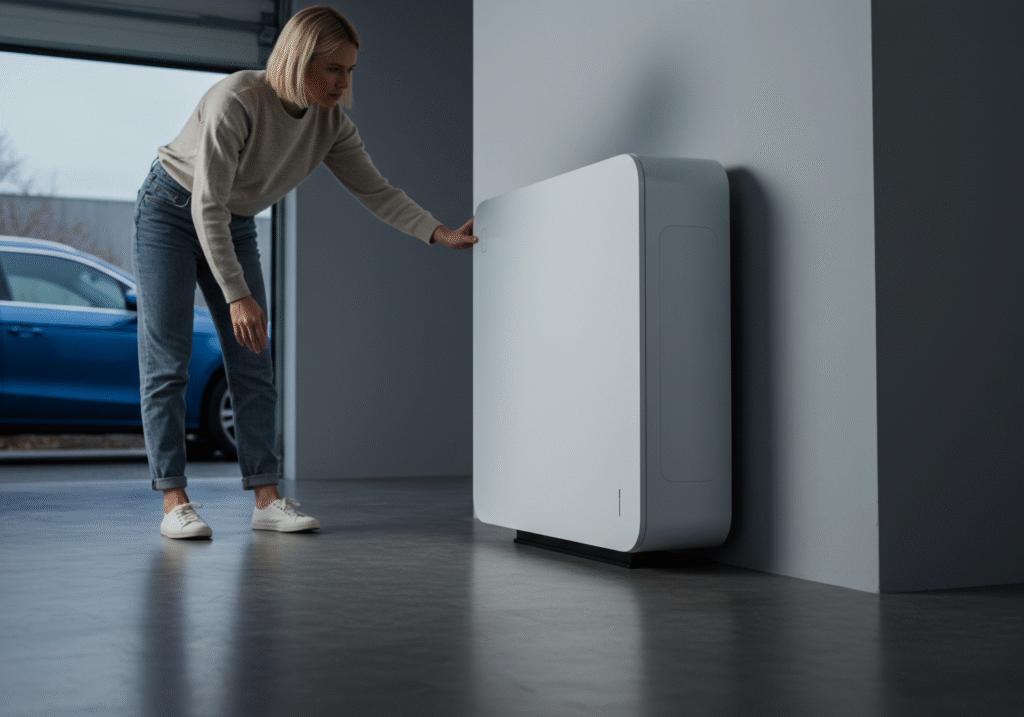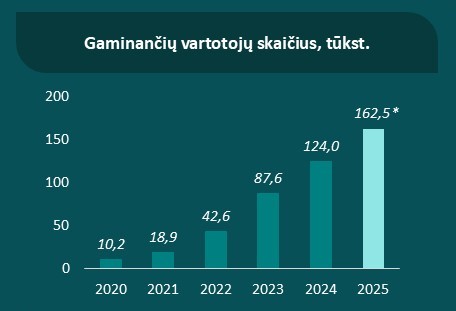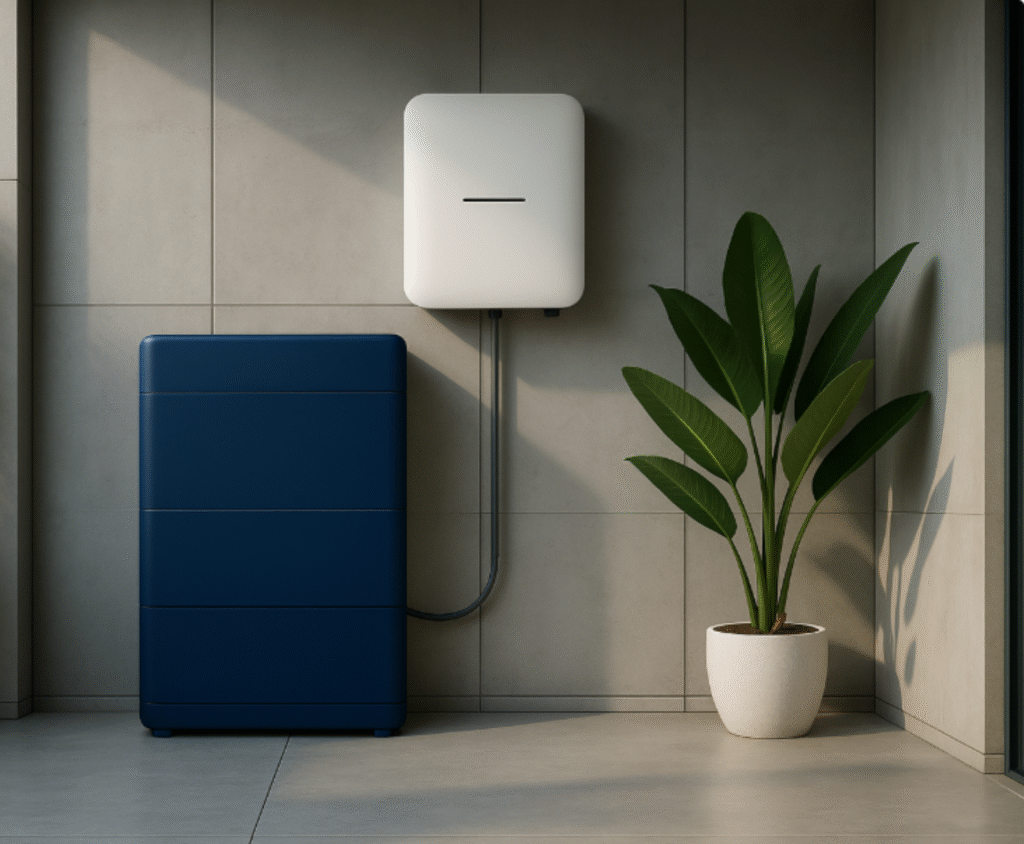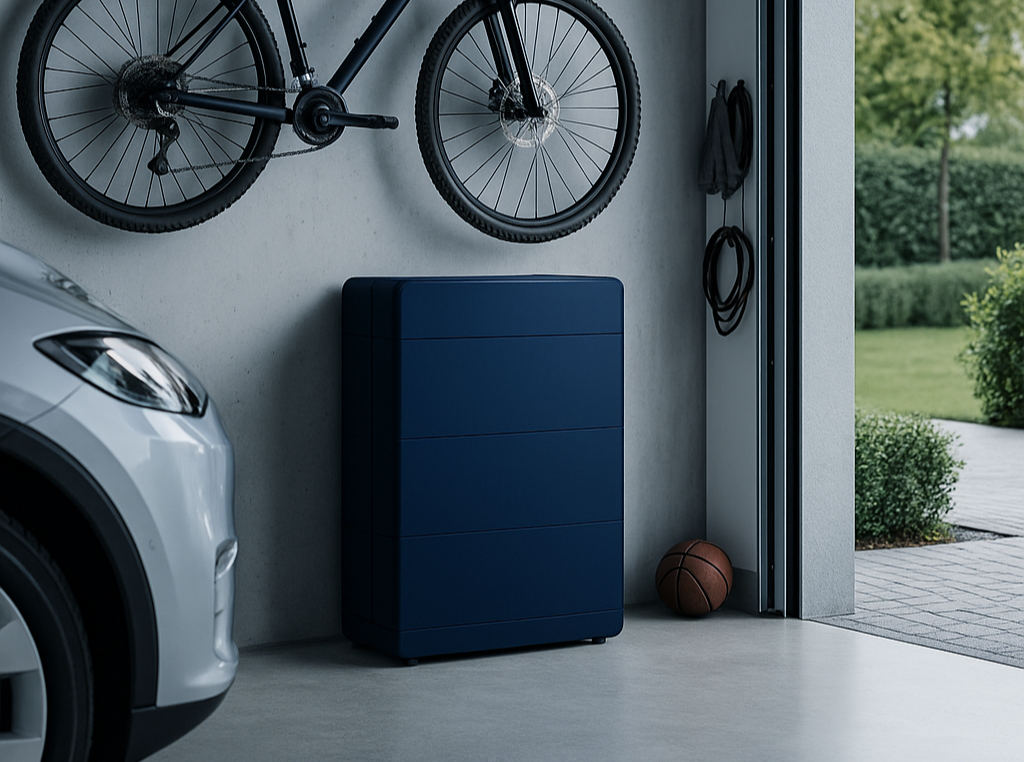Pagrindinis » Uncategorized » What is an energy storage device and when is it really needed?

The number of generating consumers – people who generate their own electricity from renewable sources – is growing rapidly in Lithuania. In the last few years, this segment has been growing very fast: in 2020 there were only about 10,000 of them, and in 2025 it will already exceed 162,000. This growth shows a growing drive to become energy self-sufficient and to find ways to make the most efficient use of the energy we produce.

But just making it is not enough. Most of the production takes place during the day, when some of the electricity remains unused, and in the evening, when demand increases, there is a shortage of electricity, which has to be taken from the grid and ESO has to pay a conservation fee for the energy it has given away during the day. Some of the benefits are thus dissipated. An energy storage device solves this discrepancy: you store the day’s surplus energy locally and use it when you need it most.
The storage increases on-site consumption of own electricity, reduces ESO’s storage costs and provides greater independence – energy is available in the evening, at night or on cloudy days.
The greatest benefit of a storage unit is when you need the most electricity in the evening or morning, while production takes place during the day, allowing you to use the day’s energy when you need it most. If you have a time zone plan (e.g. day and night tariffs) or dynamic/hourly tariffs, the aggregator allows you to store electricity during cheaper hours and use it during more expensive hours. Even with a single fixed tariff, consuming more of your own electricity on site reduces storage costs.
Backup power. A well-designed storage system can also act as a backup power supply. This is where the inverter comes in – a device that converts the electricity generated by the sun into electricity that can be used at home and directs it to where it is needed: to your home grid or to a storage device. Withbackup power, it powers critical home circuits such as the fridge, lighting and communication equipment. Which circuits to include and how much power is enough is planned individually according to needs and equipment. As the amount of energy fed into the grid decreases, so does your dependence on the grid and you have more control over your consumption.
It is not only a practical solution for everyday life, but also an additional guarantee of safety and comfort, especially for people living in the countryside or who frequently experience power failures.
Before buying a storage battery, it is important to check what equipment is already installed at your solar power plant – this will determine whether the storage system can be connected immediately or whether additional solutions will be needed. If you have a hybrid inverter (converter), the storage system can usually be connected without additional modifications. However, if a string inverter is used, an additional or new inverter may be required.
If you are still planning a solar power plant, a hybrid inverter is a good option – it usually makes it easier to integrate the future energy storage system and gives you more flexibility.
Modern loggers last About 10-15 years. The system works automatically, so there is no need for daily maintenance: operation basically consists of monitoring the operation via the app and periodic software. toolgThe software updatingas. With the right capacity and operating mode, the equipment is operational efficiently for the entire lifetime of the equipment and requires no additional maintenance.

Modern loggers last About 10-15 years. The system works automatically, so there is no need for daily maintenance: operation basically consists of monitoring the operation via the app and periodic software. toolgThe software updatingas. With the right capacity and operating mode, the equipment is operational efficiently for the entire lifetime of the equipment and requires no additional maintenance.

The energy storage solution helps to exploit the full potential of the solar power plant and increases the household’s independence from the grid. This is the next step towards greater energy self-sufficiency – where more and more electricity will be generated and consumed in the home itself.
With falling equipment prices and growing consumer awareness, storage is increasingly becoming a natural part of the solar power plant, rather than an add-on – especially for those who want more control and lower bills.
We use cookies to ensure that our website runs smoothly and to provide you with the most relevant content. You can choose which cookies you accept.